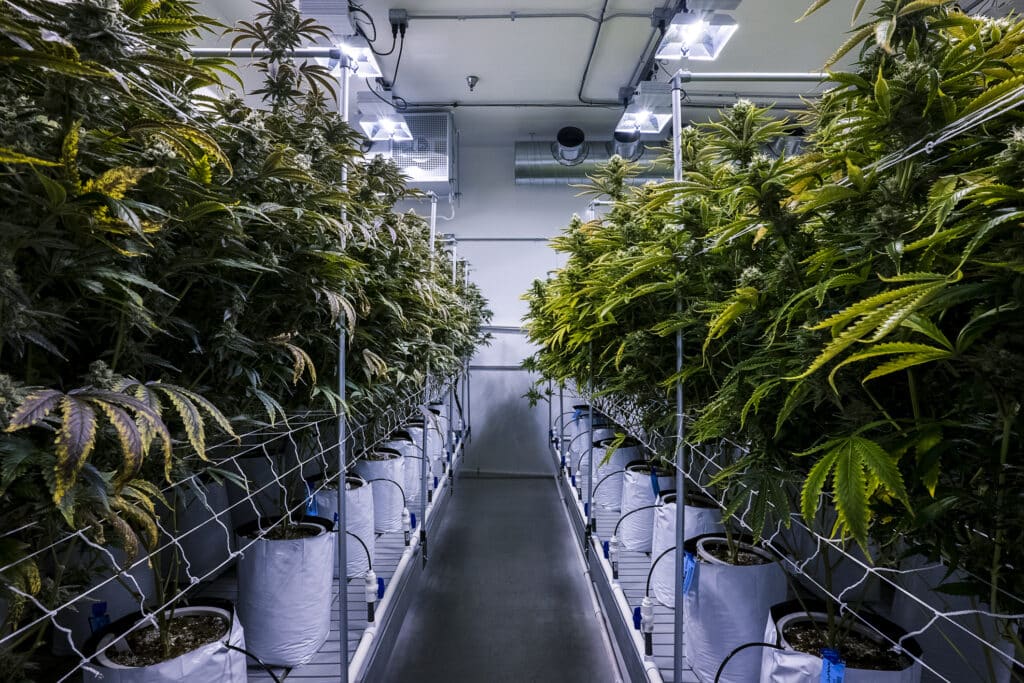
The Role of HVAC in Indoor Agriculture in Urban Dallas
Indoor agriculture has seen significant growth in urban areas like Dallas, driven by the need for fresh, year-round produce. Climate control is crucial for these operations to maintain plant health and ensure optimal growth.
HVAC systems play a central role in creating the perfect environment by regulating temperature, humidity, and air quality. Without HVAC, indoor farms would struggle to sustain the conditions necessary for high crop yields.
How HVAC Supports Indoor Agriculture
Indoor farming is becoming increasingly vital in urban areas like Dallas. One of the key elements driving its success is the use of HVAC systems. These systems maintain the optimal environment for crops, ensuring steady growth and high yields. Here’s how HVAC systems play a crucial role:
-
Temperature Regulation
Indoor crops like herbs and leafy greens require precise temperature control to avoid stress. HVAC systems stabilize temperatures, preventing harmful fluctuations and enabling consistent growth, even when outside conditions are unpredictable.
-
Humidity Control
Moisture is a critical factor for plant health. Too much humidity leads to mold and pests, while too little can dry out the crops. HVAC systems fine-tune humidity levels, ensuring the perfect balance for each plant type.
-
Airflow and Ventilation
Plants need fresh air to absorb carbon dioxide for photosynthesis. HVAC systems provide steady airflow, removing excess moisture and regulating CO2 levels, which are crucial for plant growth.
-
Advanced Technology Integration
Modern HVAC systems come equipped with smart sensors and controls. These allow real-time adjustments to temperature, humidity, and CO2, ensuring each crop receives the exact conditions it needs for optimal growth.
In short, HVAC systems are indispensable for indoor agriculture, providing the environment necessary to grow healthy, high-quality crops year-round.

Energy Efficiency and Sustainable Indoor Farming
As indoor and vertical farming grows, especially in urban hubs like Dallas, managing energy consumption becomes a pressing challenge.
HVAC systems, which regulate temperature, humidity, and airflow, are indispensable to these operations but can be major energy consumers. This makes energy efficiency not only an objective but a necessity for sustainable farming.
Today’s smart HVAC systems are tackling this issue head-on, transforming farming by reducing energy waste while enhancing productivity.
The Energy Challenge in Vertical Farms
Vertical farming stacks crops in layers, dramatically increasing the need for artificial light, temperature control, and humidity regulation. Each layer must have a stable climate to promote healthy growth, which demands that HVAC systems work continuously.
Without energy-efficient HVAC solutions, utility bills could skyrocket, threatening the farm’s profitability. This is particularly critical in places like Dallas, where fluctuating energy costs make efficient systems a cornerstone of sustainable farming.
Smart HVAC Systems: Reducing Waste and Boosting Efficiency
Modern HVAC systems stand out for their precision. They utilize smart sensors that monitor key factors like temperature, humidity, and CO2 levels. These systems adjust in real-time, reducing cooling during cooler nights, for instance, and ensuring that only the necessary amount of energy is used.
Smart thermostats and automated controls further enhance efficiency, keeping energy use—and costs—within manageable limits while providing ideal growing conditions.
Sustainability and a Lower Carbon Footprint
Energy-efficient HVAC systems are crucial in minimizing the environmental impact of indoor farms. Many of these systems incorporate energy recovery technologies, capturing and repurposing heat from lighting or other operations. This reduces both energy consumption and the farm’s carbon footprint, making operations greener.
For urban farmers looking to enhance sustainability, investing in such systems provides a dual benefit: cutting emissions and boosting energy efficiency without sacrificing crop productivity.
Boosting Profitability with Smart Solutions
Energy efficiency is directly tied to profitability. By cutting waste and optimizing energy use, indoor farms can lower their operational costs, reinvesting savings into scaling up production. This is particularly crucial for vertical farming, where profit margins can be slim.
With smart HVAC systems, farmers in cities like Dallas can increase yields, reduce costs, and meet the demand for fresh, local produce year-round without compromising sustainability or profitability.
In conclusion, adopting energy-efficient HVAC systems is no longer optional—it’s a strategic necessity for indoor farms. These systems are revolutionizing the way food is grown in controlled environments, offering the ability to create optimal conditions while minimizing energy waste.
By embracing these innovations, indoor farms can achieve greater sustainability and profitability, paving the way for the future of urban agriculture.
Temperature Control for Year-Round Farming
HVAC technology has become essential for modern indoor farming, particularly in cities like Dallas, where climate fluctuations can pose a significant challenge to maintaining year-round crop production.
By allowing farmers to regulate temperature precisely, HVAC systems help extend growing seasons, ensuring optimal conditions for crops even when external weather patterns vary greatly.
This means that no matter how hot or cold it gets outside, indoor farms can maintain a consistent climate, fostering continuous crop growth.
In regions like Dallas, where summers are hot and winters can bring sudden cold snaps, HVAC systems allow indoor farms to avoid the impacts of extreme temperatures.
They work by adjusting cooling systems during summer months and providing heating during colder periods to stabilize the environment. This ability to regulate temperatures creates a controlled microclimate, which allows crops to grow unaffected by the harsh external conditions that would typically disrupt outdoor agriculture.
The role of HVAC systems becomes even more crucial during the colder months, particularly in areas like Keller, where temperatures can drop significantly in October.
During these months, heating elements within HVAC systems ensure that crops continue growing by maintaining the optimal warmth necessary for plant health. For farmers, this means they can extend their harvest into colder seasons without sacrificing crop quality or yield.
HVAC technology plays an indispensable role in enabling year-round farming. By precisely controlling temperature, especially during seasonal fluctuations, these systems allow urban farmers to maximize crop production while maintaining the ideal growing conditions necessary for healthy plants.
Humidity and Air Quality Management
Controlling humidity is a critical aspect of indoor agriculture, as improper moisture levels can lead to various problems like plant diseases, pest infestations, and mold growth. High humidity encourages the development of mold and mildew, which can spread rapidly and damage crops.
Additionally, excess moisture creates an environment conducive to pests, such as fungus gnats, which thrive in overly damp conditions. On the other hand, low humidity can cause plants to dehydrate, weakening their ability to grow and increasing their susceptibility to diseases. Therefore, managing humidity is essential to maintaining the health and productivity of an indoor farm.
Advanced HVAC systems provide precise control over moisture levels, ensuring that plants receive the optimal environment for growth. These systems use dehumidification features to remove excess moisture from the air, preventing mold and disease outbreaks.
Conversely, in drier environments, they can add moisture to maintain the necessary humidity levels. Proper ventilation is also crucial for air quality, as it helps circulate fresh air, reducing the risk of fungal spores and pests from building up in stagnant air pockets.
This balance of humidity control and airflow ensures a healthier environment for crops, allowing them to thrive without the threat of moisture-related issues.
In summary, advanced HVAC systems play a vital role in managing both humidity and air quality, which are essential to preventing diseases, pests, and mold in indoor agriculture. By creating a balanced environment, these systems support the overall health and growth of crops, helping farmers maintain high yields and healthy plants.
The Role of Smart HVAC Technology in Urban Farms
Urban farms, which thrive in densely populated environments, need precision and efficiency to succeed. The rise of smart HVAC technology is revolutionizing how these farms operate, allowing farmers to maintain optimal growing conditions with minimal manual intervention.
These advanced systems are equipped with sensors that automatically monitor key environmental factors, such as temperature, humidity, and CO2 levels, and adjust them in real time to meet the specific needs of the crops.
Real-Time Adjustments for Optimal Growing Conditions
The most significant advancement in smart HVAC systems is the use of sensors to track environmental data 24/7. These systems respond immediately to changes in conditions, preventing issues before they affect crop health.
For example, if humidity levels become too high, smart systems can activate dehumidifiers to prevent mold growth. Similarly, if temperatures drop below optimal ranges, the system will automatically raise the heat, ensuring a stable growing environment.
This precision allows urban farms to avoid the fluctuations that can lead to reduced crop quality or yield loss, making smart HVAC systems a cornerstone of modern urban agriculture.
Reduction in Manual Labor and Increased Efficiency
One of the greatest advantages of smart HVAC technology is its ability to reduce the need for manual labor. Traditionally, maintaining an indoor farm requires frequent checks on temperature, humidity, and airflow.
With smart systems, these tasks are automated, freeing up farmers to focus on more complex aspects of farming, such as crop management and distribution.
The ability to control HVAC systems remotely through apps or cloud-based platforms further increases operational flexibility, allowing farmers to make adjustments on the go. This reduction in labor not only improves efficiency but also lowers the operational costs associated with continuous manual monitoring.
Data-Driven Insights for Better Decision-Making
In addition to automation, smart HVAC systems provide valuable data that can help farmers make informed decisions. By analyzing patterns in environmental conditions and crop responses, farmers can fine-tune their processes for better yields.
For example, the system may show that slightly lower nighttime temperatures result in faster growth for certain crops, allowing the farmer to adjust settings accordingly.
This level of precision is crucial in urban environments, where space is limited, and maximizing every square foot is essential for profitability.
Energy Efficiency and Sustainability
Smart HVAC systems are designed not only to optimize crop growth but also to be energy efficient. By using real-time data, these systems ensure that only the necessary energy is used to maintain optimal conditions. This reduces energy waste and lowers utility bills, making urban farms more sustainable.
Additionally, energy recovery features, such as capturing excess heat from lights or machinery, can further reduce energy consumption, making these systems an eco-friendly choice for farmers aiming to minimize their environmental impact.
The integration of smart HVAC technology in urban farms is transforming the industry by reducing manual labor, enhancing efficiency, and providing precise environmental control.
These systems enable urban farmers to grow high-quality crops year-round while optimizing resource use and improving sustainability. As urban farming continues to expand, adopting smart HVAC technology will be crucial to its success.
Challenges of Integrating HVAC into Vertical Farms
Vertical farming presents an exciting solution to urban food production, but it brings unique challenges for HVAC systems. Unlike traditional farms, vertical farms require precise environmental controls to manage crops grown in stacked layers.
Here are the key HVAC challenges faced by vertical farms:
-
Managing Heat from LED Lights
LED lighting, essential for mimicking sunlight in vertical farms, generates considerable heat. In compact, enclosed spaces, this heat accumulates quickly, leading to potential overheating. Without proper heat management, crops can become stressed, reducing growth and overall yield. HVAC systems must work continuously to extract excess heat while maintaining stable temperatures across all crop levels.
-
Ensuring Consistent Airflow
Air circulation is critical in vertical farming, but stacked crops create barriers that disrupt airflow. Uneven air distribution leads to temperature and humidity imbalances across layers, which can hinder crop growth and encourage pests or diseases. Effective HVAC systems must ensure consistent ventilation throughout the farm to prevent these issues, creating an environment where every layer receives the necessary air for optimal growth.
-
Balancing Humidity Across Layers
Humidity control is particularly challenging in vertical farms. Lower layers tend to trap more moisture, while upper layers can dry out faster, leading to uneven growth conditions. HVAC systems must continuously monitor and adjust humidity levels to maintain a balanced, uniform environment, preventing mold in one layer and dehydration in another.
Integrating HVAC systems into vertical farms involves overcoming unique challenges in managing heat, airflow, and humidity. Addressing these obstacles is essential for maintaining healthy crops and ensuring the success of vertical farming in urban environments.
The Future of HVAC in Urban Indoor Farming
The future of HVAC systems in urban indoor farming will be shaped by groundbreaking innovations, especially in automation and energy-efficient designs.
As urban agriculture expands, these advancements will play a pivotal role in creating sustainable and highly productive farming environments.
Key trends include smart automation, which will allow systems to adjust temperature, humidity, and airflow with minimal human intervention.
Additionally, energy-efficient technologies, like energy recovery systems and the integration of renewable energy sources, will reduce the environmental footprint of urban farms. These changes will help urban farming scale up while minimizing operational costs and enhancing sustainability.
-
Increased Automation
Future HVAC systems will increasingly rely on automation, with smart sensors and AI technologies becoming standard. These systems will automatically adjust temperature, humidity, and airflow in real time, responding to crop needs and external conditions without human intervention. This will reduce labor costs and increase the precision of climate control, ensuring that crops receive the exact conditions they need to thrive.
-
Energy-Efficient Designs
With the growing emphasis on sustainability, future HVAC designs will focus heavily on energy efficiency. Innovations like energy recovery systems will capture and repurpose heat generated by LED lighting and other equipment, significantly reducing energy consumption. Additionally, advanced systems will incorporate renewable energy sources, such as solar power, to further lower the environmental impact of urban farms. These advancements will not only improve operational efficiency but also help urban agriculture become more eco-friendly and cost-effective.
-
Impact on Urban Agriculture
These advancements will revolutionize urban farming by making it more scalable and sustainable. Automated, energy-efficient HVAC systems will allow for larger farms with reduced operational costs, enabling farmers to grow fresh produce year-round. As cities continue to embrace indoor agriculture, these innovations will be essential for meeting the food demands of growing urban populations.
The future of HVAC in urban farming will be shaped by increased automation and energy efficiency, fostering a sustainable and highly productive agricultural model.
Case Study: HVAC’s Role in a Dallas Indoor Farm
Imagine a Dallas-based indoor farm that grows leafy greens year-round using advanced HVAC systems. This farm relies on precise climate control to ensure optimal conditions for crop production in the fluctuating Texas climate.
The HVAC system manages temperature, humidity, and airflow, creating a stable environment for plants to thrive despite external weather changes.
With the help of smart HVAC technology, the farm automatically adjusts temperature and humidity to match the plants’ growth stages. This precision improves yields by keeping plants in their ideal growing conditions, ensuring faster growth and healthier crops.
Additionally, the system’s energy-efficient design recycles heat from LED lights, reducing overall energy consumption by 20%. This not only lowers operational costs but also supports sustainable farming practices.
By maintaining consistent environmental conditions, the farm can produce higher yields throughout the year while minimizing energy waste, demonstrating how HVAC systems are integral to the success of urban indoor agriculture in Dallas.

FAQs
-
What are the primary benefits of HVAC in indoor agriculture?
HVAC systems provide precise climate control, regulating temperature, humidity, and airflow, which leads to healthier crops and year-round production, regardless of external conditions.
-
How does HVAC control humidity and air quality?
By adjusting moisture levels and circulating fresh air, HVAC systems prevent mold growth and pests while ensuring optimal air quality for crop health.
-
What makes HVAC systems energy-efficient in urban farms?
Smart HVAC systems use energy recovery technologies to minimize waste. They automatically adjust settings based on crop needs, reducing overall energy consumption.
-
How do smart HVAC systems improve crop yields?
With sensors monitoring environmental factors, HVAC systems maintain ideal conditions, allowing crops to grow faster and produce higher yields in urban farms.
-
What are the challenges of using HVAC in vertical farms?
Key challenges include managing heat from LED lights and ensuring even airflow across stacked layers, while maintaining balanced humidity throughout all levels of the farm.


